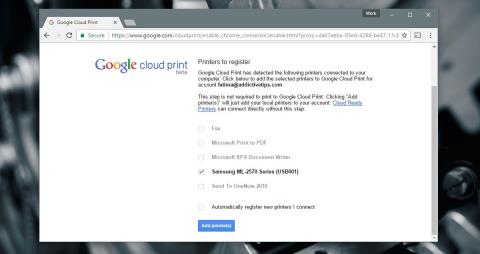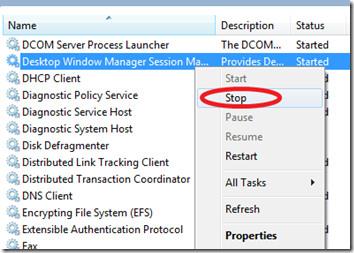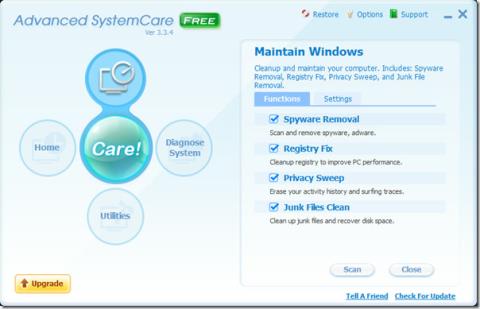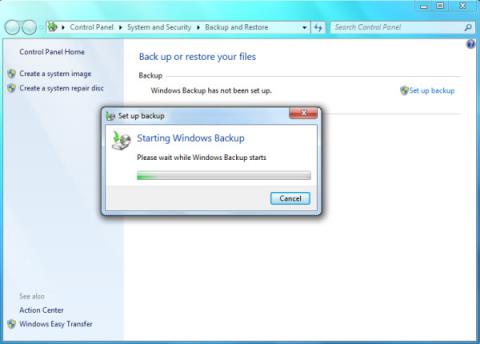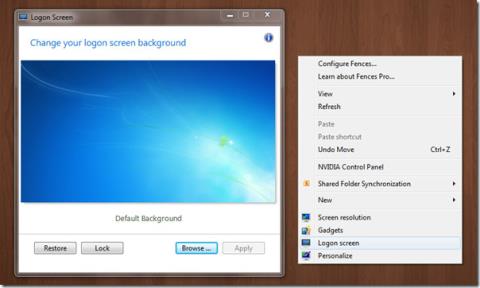Photoshop에서 사용자 정의 캔버스 사전 설정을 만드는 방법
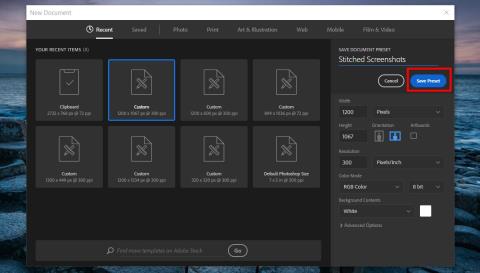
Photoshop에서 사용자 정의 캔버스 사전 설정을 만들고 저장하는 방법
모든 Windows 사용자는 PC를 어떻게 사용하고 인터넷을 검색할 때 얼마나 조심하느냐에 따라 결국 컴퓨터 문제를 처리합니다. 블루 스크린 문제는 컴퓨터를 불구로 만들고 사용을 방해합니다. 그러나 문제가 아무리 심각하더라도 BSOD 오류는 수정할 수 있습니다 .
비페이지 영역의 페이지 오류란 무엇입니까?
비페이지 영역의 페이지 오류는 BSOD 오류입니다. 일반적으로 0x00000050 코드가 수반되며 Windows 10, 8, 7, Vista 및 XP를 포함한 모든 Windows 반복에서 발생할 수 있습니다.
중지 코드는 메인, 프로세서 또는 비디오 카드 메모리에 관계없이 OS 시스템이 메모리의 필수 시스템 파일을 식별할 수 없음을 나타냅니다. 결과적으로 Windows는 데이터 손실 및 파일 손상을 방지하기 위해 자체적으로 종료되고 블루 스크린을 표시합니다.
Windows 10에서 비페이지 영역의 페이지 오류를 수정하는 방법
비페이지 영역 정지 코드의 페이지 오류 문제를 해결하는 데 오랜 시간이 걸릴 수 있습니다. 그러나 인내심을 가지고 자신을 무장하는 것이 중요합니다. 새로운 문제가 발생할 수 있으므로 웹에서 더 많은 정보를 검색할 수 있도록 인터넷에 액세스할 수 있는 다른 장치를 대기 상태로 두는 것도 좋은 생각입니다.
또한 비페이지 영역의 페이지 오류로 인해 Windows 10에서 부팅 루프가 발생하지 않는 한 보안 조치로 시스템 복원 지점 과 개인 파일 및 응용 프로그램의 전체 백업을 생성해야 합니다. 그런 다음 다음 해결 방법을 확인하십시오.
1. PC 하드 재부팅
PC를 하드 재부팅하는 일회성 문제인 경우 페이지 오류 IN 비페이지 영역 중지 코드를 제거할 수 있는 간단한 해결 방법으로 시작하십시오. 완전히 다시 시작하기 위해 컴퓨터에 저장된 모든 임시 캐시를 제거하는 것을 의미합니다.
컴퓨터를 하드 재부팅하는 방법:
2. 윈도우 업데이트 실행
Windows 10을 업데이트한 적이 없거나 마지막 업데이트 이후 너무 오랜 시간이 지난 경우 이 이벤트를 더 이상 연기하지 마십시오. 업데이트 보류를 나타내는 알림이나 전원 버튼의 작은 빨간색 점과 같이 컴퓨터가 업데이트를 수행할 준비가 되었다는 징후가 있는지 확인합니다.
그러나 Windows 10 자동 업데이트를 비활성화한 경우 수동으로 점검을 수행하고 운영 체제가 최신 기능, 개선 사항, 핫픽스 및 보안 패치를 받도록 할 수 있습니다.
시스템 업데이트를 수동으로 확인하는 방법:
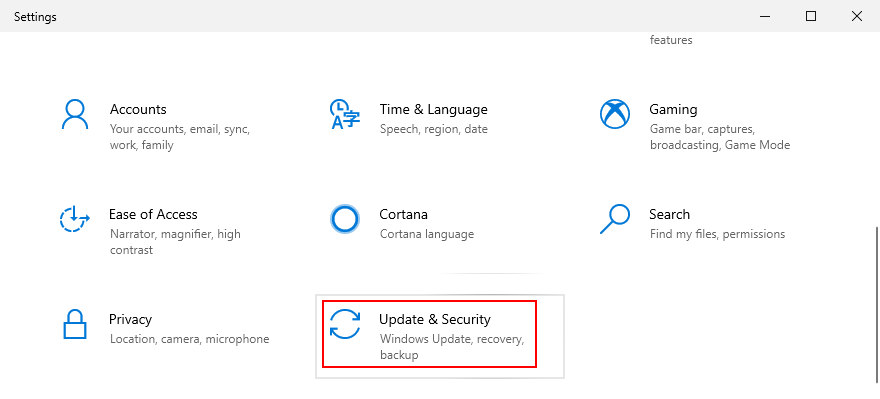
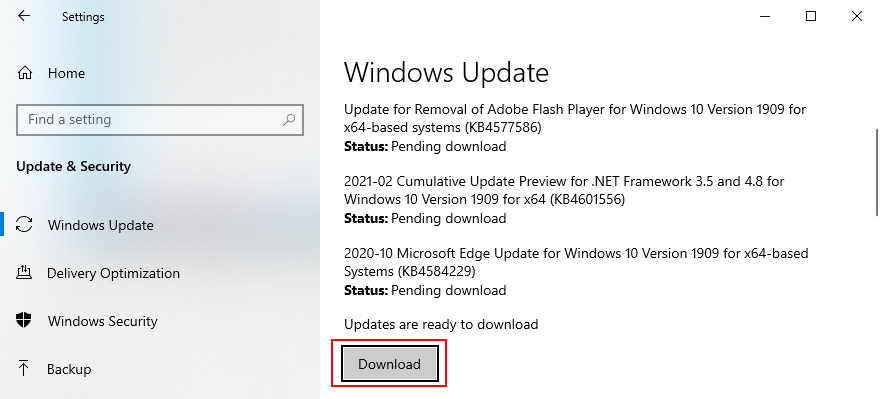
3. 하드 디스크 오류 수정
하드 디스크 손상 및 불량 섹터는 PAGE FAULT IN NONPAGED AREA와 같은 블루 스크린 오류를 유발할 수 있습니다. 예를 들어 정전으로 인해 파티션 포맷 작업이 갑자기 중단될 때 발생할 수 있습니다.
이 경우 CHKDSK(디스크 검사)라는 내부 명령줄 유틸리티를 사용하여 HDD를 스캔하고 오류를 수정할 수 있습니다.
CHKDSK를 사용하는 방법:
chkdsk c: /f /r운영 체제가 기본 C: 드라이브에 설치된 경우 입력 합니다. 그렇지 않으면 c:올바른 파티션 문자로 바꾸십시오 . Enter 키를 누르 십시오.
4. 손상된 시스템 파일 복구
하드 디스크 오류는 비페이지 영역에 페이지 오류를 일으킬 수 있을 뿐만 아니라 Windows에서 프로세스를 실행하는 데 필요한 손상, 수정 또는 누락된 시스템 파일을 유발할 수 있습니다. 이 시나리오의 경우 다른 내장 명령줄 도구인 SFC(시스템 파일 검사기)를 사용할 수 있습니다 .
SFC를 사용하는 방법:
sfc /scannow및 Windows에서 무결성 위반을 찾아 수정하도록 허용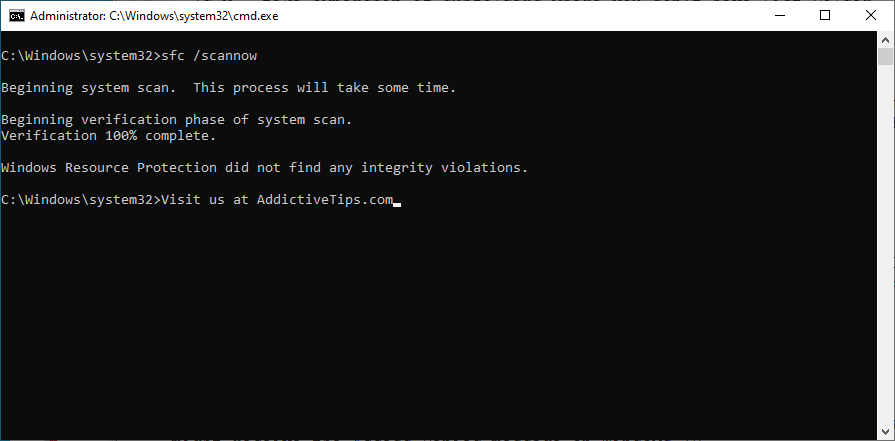
SFC가 문제를 찾지 못하거나 PAGE FAULT IN NONPAGED AREA 정지 코드를 복구하기에 충분하지 않은 경우 DISM(배포 이미지 서비스 및 관리)으로 전환하여 OS 이미지의 구성 요소 저장소를 수정할 수 있습니다.
DISM을 사용하는 방법:
DISM /online /cleanup-image /scanhealth명령을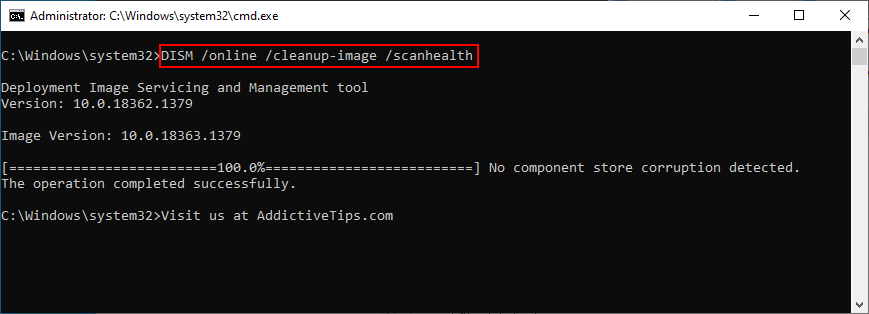
DISM /online /cleanup-image /restorehealth문제를 해결하기 위해 실행 하십시오.sfc /scannow)를 실행하여 시스템 점검을 수행합니다.5. 장치 드라이버 확인
컴퓨터에 제대로 설치되지 않은 장치나 오래되었거나 운영 체제와 호환되지 않는 드라이버는 블루 스크린에 PAGE FAULT IN NONPAGED AREA 오류가 계속 표시되는 또 다른 이유일 수 있습니다. 예를 들어, 많은 사용자가 AMD 디스플레이 드라이버에 문제를 보고합니다. 여기 당신이해야 할 일이 있습니다.
기기 재설치:
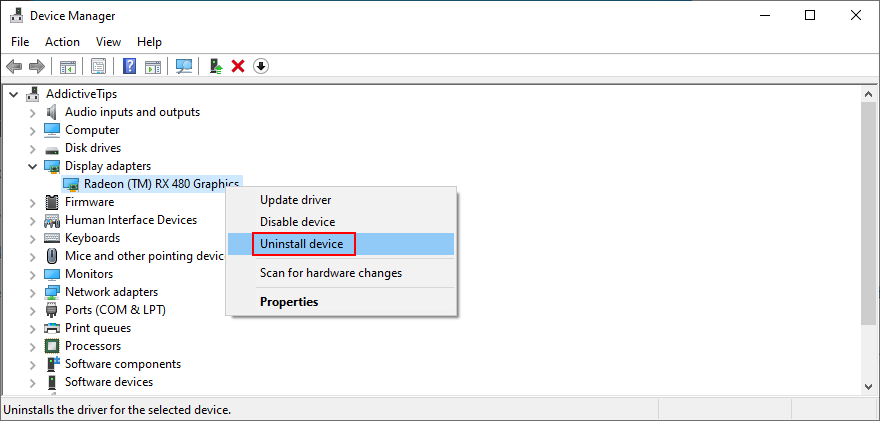
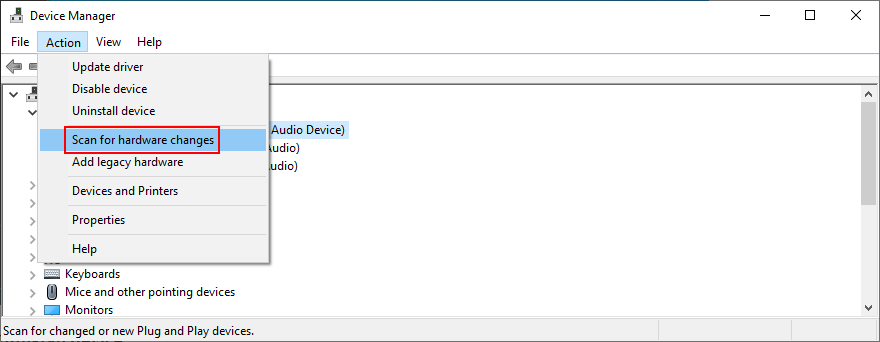
이전 드라이버 업데이트:
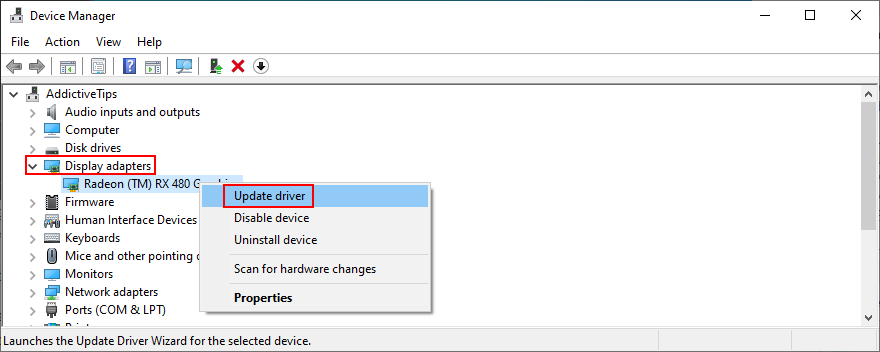
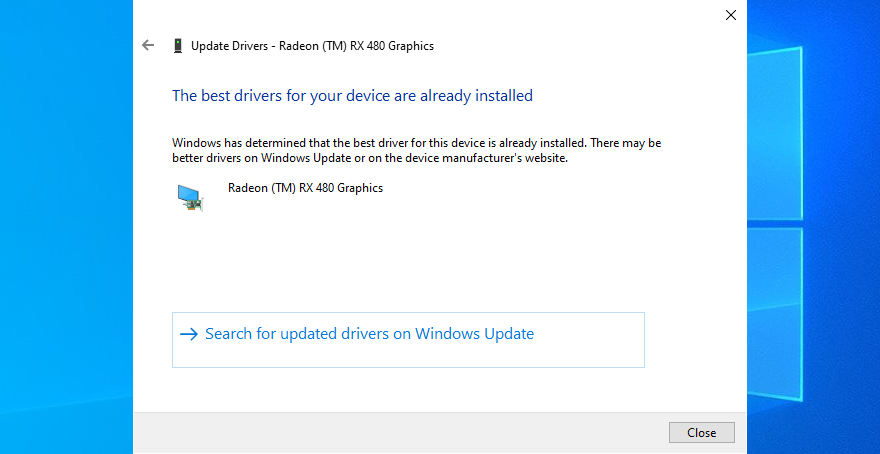
PC에서 어떤 드라이버를 업데이트해야 하는지 파악하기 어려울 수 있습니다. 이 문제를 해결하는 데 많은 시간을 할애하고 싶지 않다면 드라이버 업데이트 응용 프로그램을 사용하십시오 . PC에서 사용되지 않는 모든 드라이버를 자동으로 감지하고 모두 설치하도록 제안합니다. 또한 운영 체제에서 지원하지 않는 드라이버를 얻을 위험이 없습니다.
실수로 장치에 대해 호환되지 않는 드라이버를 설치한 경우 이전의 안정적인 버전으로 롤백하십시오. 그 후에는 PC를 그대로 두고 페이지 오류가 비페이지 영역에 중지 코드가 표시되는지 확인하거나 앞에서 설명한 이전 단계를 사용하여 드라이버를 올바르게 업데이트할 수 있습니다.
지원되지 않는 드라이버 롤백:
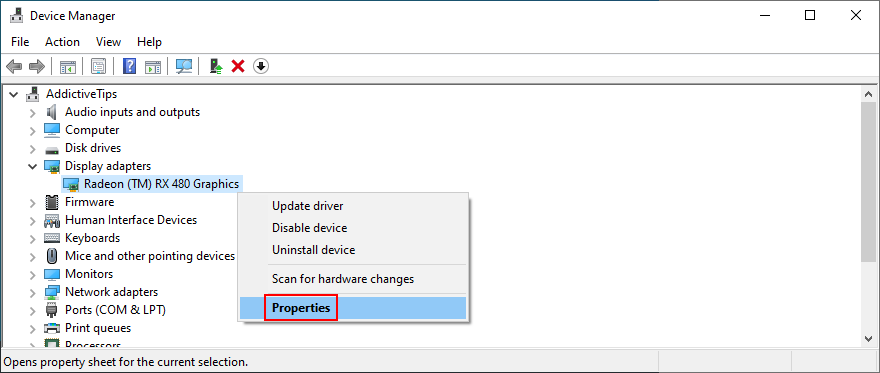
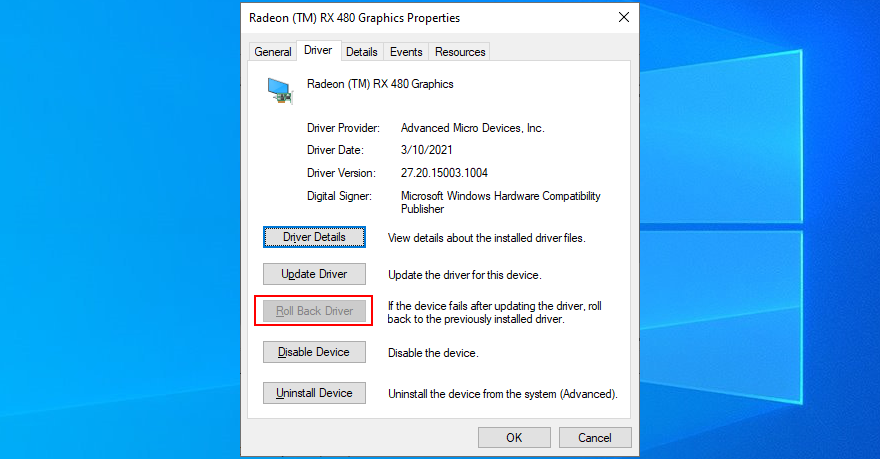
6. 악성코드 검사 실행
바이러스 감염은 Windows가 정상적으로 작동하는 데 필요한 중요한 시스템 파일을 손상시킬 만큼 강력할 수 있습니다. 일반적으로 바이러스 백신 솔루션이 설치되어 있지 않거나 항상 꺼져 있거나 온라인에 연결할 때 안전 수칙을 실행하지 않는 사용자에게 발생합니다.
이 이론을 테스트하려면 맬웨어 방지 애플리케이션을 실행하고 스캔을 실행하여 결과가 무엇인지 확인하기만 하면 됩니다. 타사 보안 솔루션이 설치되어 있지 않으면 Windows Defender로 관심을 돌리십시오.
Windows Defender를 사용하는 방법:
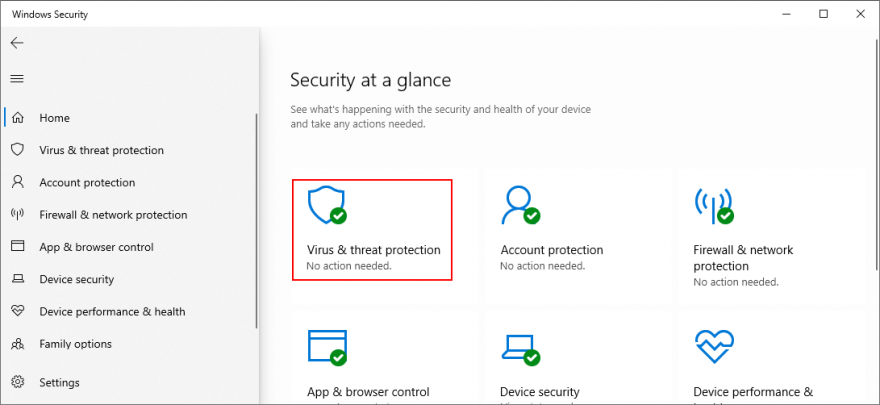
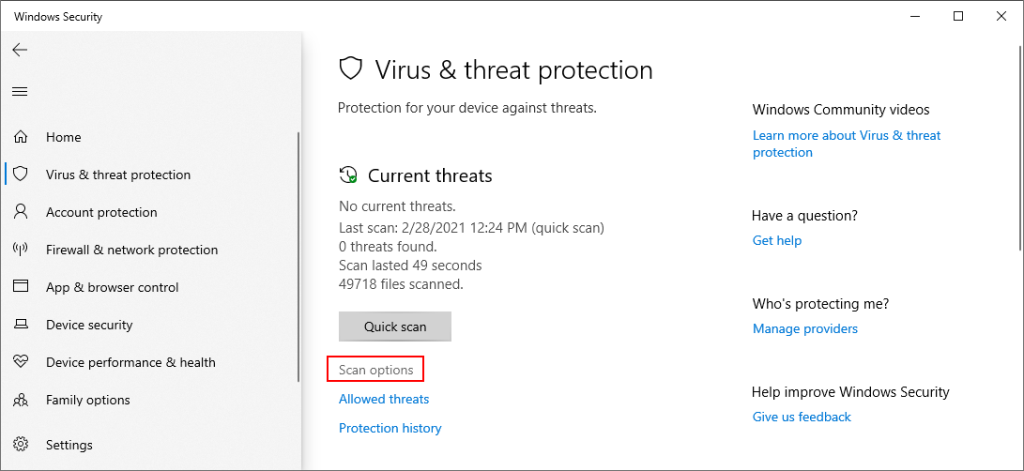
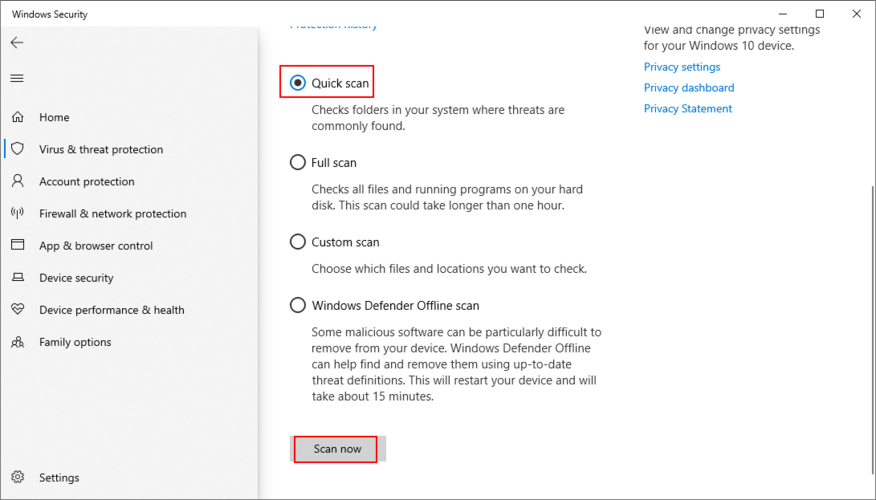
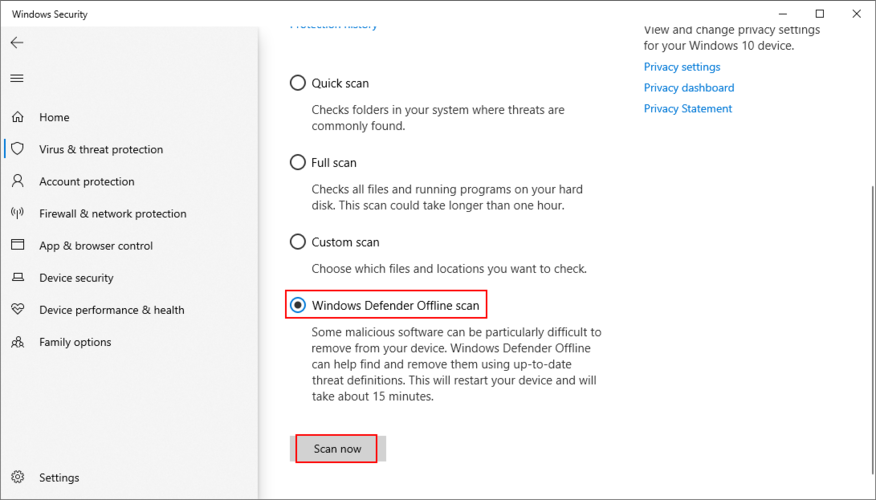
7. 클린 부팅 실행
윈도우 10 클린 부팅 자동으로 즉시 컴퓨터를 켤로 실행되는 모든 프로그램을 사용하지 않도록 설정하여 운영 체제를 시작을 의미합니다. 특정 맬웨어 에이전트는 시작 프로그램에 침투할 만큼 교활하므로 클린 부팅이 이 문제를 해결하는 데 도움이 됩니다.
Windows 10 클린 부팅 방법:
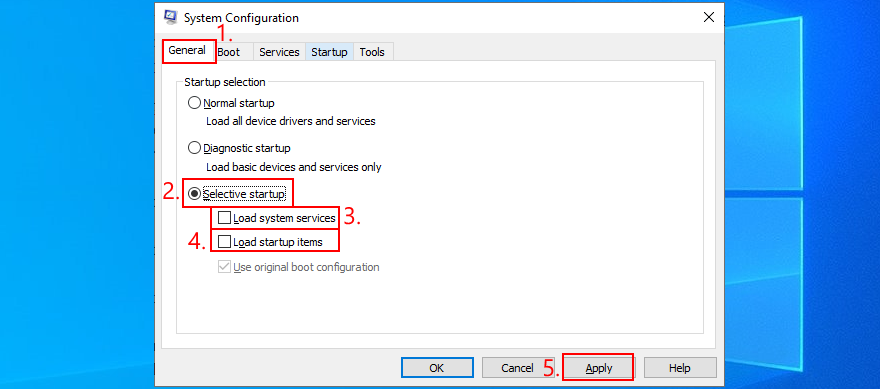
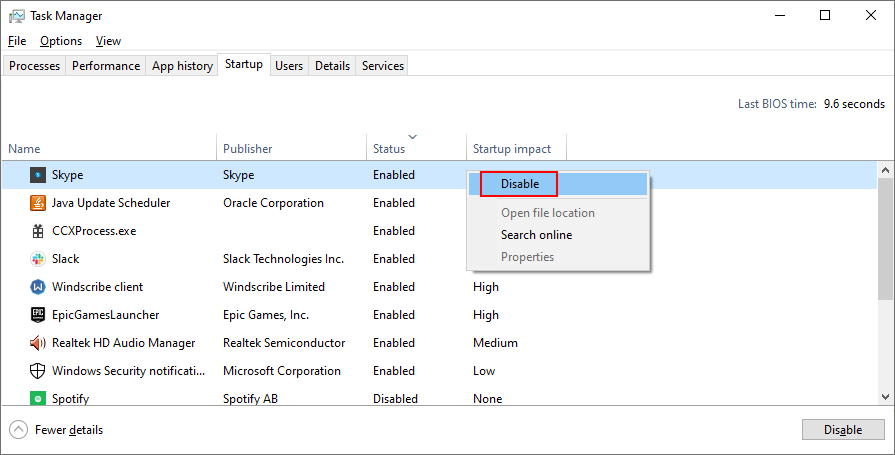
8. 안전 모드에서 Windows 10 시작
BSOD 오류 문제 해결을 위한 보안 환경을 만들려면 안전 모드에서 Windows 10 을 부팅하는 것이 좋습니다 . 운영 체제는 필요한 드라이버, 프로세스 및 서비스로만 시작됩니다. 따라서 정지 코드 PAGE FAULT IN NONPAGED AREA를 유발할 수 있는 소프트웨어 구성 요소를 비활성화하여 검색 범위를 좁힐 수 있는 간단한 방법입니다.

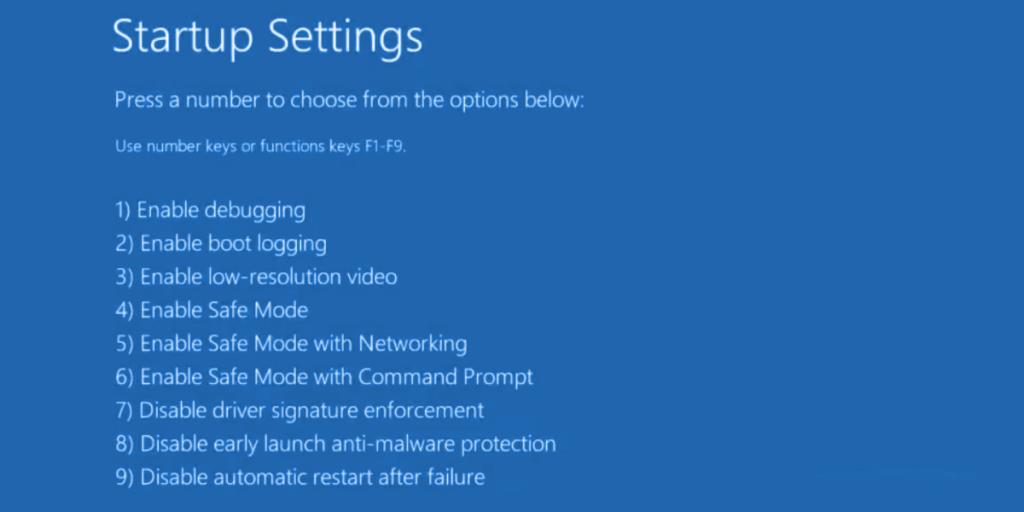
9. 디스플레이 드라이버 제거 프로그램 사용
해당 부서의 문제가 게임 및 스트리밍 경험에 영향을 미칠 수 있으므로 GPU 드라이버를 철저히 확인하는 것이 좋습니다. 더 나쁜 것은 Windows 10 또는 이전 버전에서 PAGE FAULT IN NONPAGED AREA와 같은 블루 스크린 오류가 발생할 수도 있다는 것입니다.
DDU(디스플레이 드라이버 제거 프로그램)를 사용하여 번거로움 없이 장치 소프트웨어 및 드라이버를 재설정하는 것이 좋습니다. NVIDIA, AMD 및 Intel과 함께 작동합니다. Windows를 안전 모드로 다시 시작하여 이러한 작업을 안전하게 수행할 수도 있습니다.
디스플레이 드라이버 제거 프로그램을 사용하는 방법:
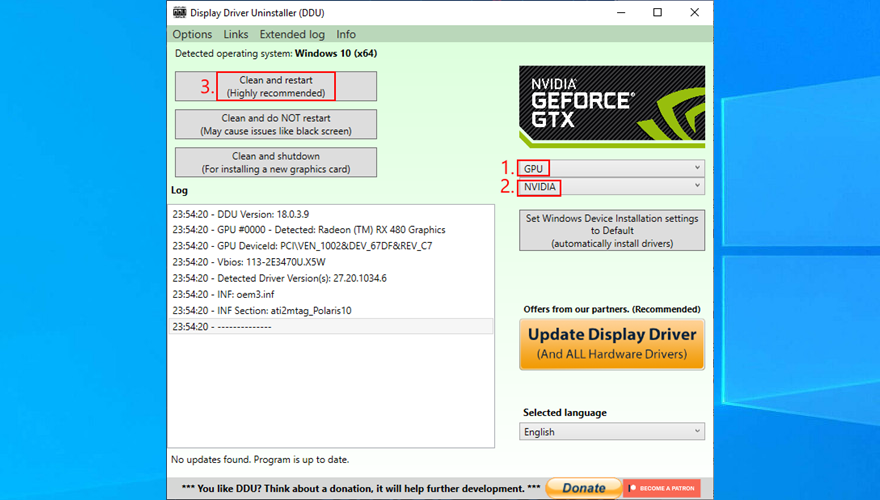
10. .NET Framework 복구 및 재설치
Microsoft .NET Framework는 운영 체제 및 Windows에서 만든 많은 소프트웨어 응용 프로그램에 대한 필수 종속성입니다. 따라서 구성 요소 패키지에 문제가 있는 경우 소프트웨어 충돌, 시스템 오류 및 PAGE FAULT IN NONPAGED AREA와 같은 블루 스크린 메시지가 발생할 수 있습니다.
그러나 바로 이 목적을 위해 Microsoft에서 출시한 간단하고 실용적인 도구를 설치하여 손상된 .NET Framework를 수정할 수 있습니다.
Microsoft .NET Framework 복구 도구를 사용하는 방법:
마법사 단계를 완료하고 바탕 화면을 종료한 후 PC에 페이지 오류가 비페이지 영역에 중지 코드가 계속 표시되는지 확인합니다. 그렇다면 .NET Framework를 다시 설치하는 것이 좋습니다. 아주 기본적인 것이기 때문에 걱정하지 마십시오.
Microsoft .NET Framework를 다시 설치하는 방법:
11. Windows 메모리 진단 실행
PAGE FAULT IN NONPAGED AREA 블루 스크린 오류는 시스템 메모리 문제로 인해 발생할 수 있습니다. 이를 테스트하는 간단한 방법은 Windows 10과 통합되어 제공되는 도구인 Windows 메모리 진단을 실행하는 것입니다.
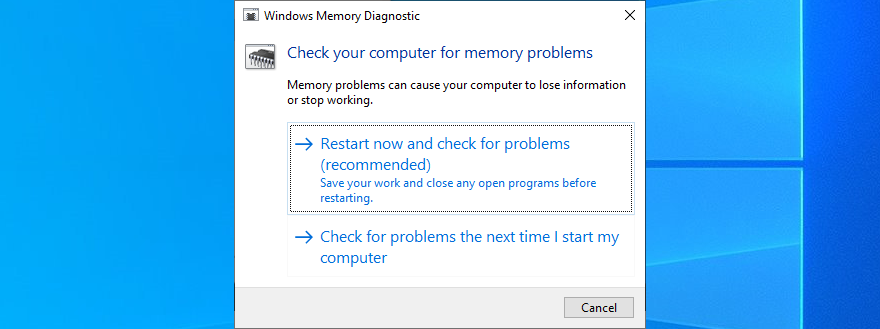
Windows가 부팅되기 전에 메모리 테스트에 참여합니다. 기본, 표준 및 확장의 세 가지 테스트를 사용할 수 있습니다. 기본적으로 표준 테스트를 실행합니다. 그러나 확장 버전으로 전환하는 것이 좋습니다. 시간이 더 걸리더라도 더 철저합니다.
이를 위해 F1 키 를 눌러 옵션 에 액세스 합니다. 그런 다음 확장을 선택 하고 F10 키 를 눌러 적용합니다. 메모리 진단이 완료되면 Windows가 정상적으로 시작되고 알림 센터에 결과가 표시됩니다. 알림을 받을 때까지 몇 초 또는 몇 분이 걸릴 수 있습니다.
더 고급 솔루션을 찾고 있다면 MemTest86 을 확인하는 것이 좋습니다 .
12. 메모리 슬롯 분리 및 재장착
Windows 메모리 진단이 오류를 나타내지 않고 여전히 페이지 오류 IN 비페이지 영역 오류를 해결할 수 없으면 메모리 슬롯을 제거했다가 다시 장착해야 합니다. 하지만 컴퓨터를 다룰 줄 알아야 합니다.
그것은 모든 케이블을 제거하고 데스크탑을 분해하고 슬롯에서 메모리 스틱을 뽑았다가 다시 부착하는 것을 의미합니다. 여러 옵션을 사용할 수 있는 경우 다른 메모리 슬롯을 사용해 볼 수도 있습니다.
그러나 RAM 카드가 수리할 수 없을 정도로 손상된 경우 교체를 고려해야 할 수도 있습니다.
13. 바이러스 백신을 일시적으로 비활성화
보안 경고는 맬웨어 방지 도구가 Windows가 최적의 매개변수로 작동하는 데 필요한 중요한 시스템 파일에 대한 액세스를 차단하고 있음을 의미할 수 있습니다. 바이러스 백신 솔루션을 일시적으로 끄면 빠르게 확인할 수 있습니다.
그러나 일부 응용 프로그램은 보안 문제로 인해 비활성화할 수 없습니다. 이 경우 컴퓨터에서 프로그램을 제거하는 것이 좋습니다.
Furthermore, if you have two or more anti-malware programs installed, each with its own real-time engine, it’s absolutely necessary to uninstall all except one. That’s because multiple real-time safeguards can clash with each other, leading to severe computer problems, even blue screen errors like PAGE FAULT IN NONPAGED AREA.
14. Temporarily turn off your firewall
Just like your antivirus application, your antivirus could be blocking Internet access to system files that really need it. For example, Windows Update needs web access or it can’t bring your system up to speed, and Microsoft Store won’t work either.
In some rare cases, incorrect firewall settings can lead to BSOD errors such as PAGE FAULT IN NONPAGED AREA. Here’s what you need to.
How to disable your firewall:
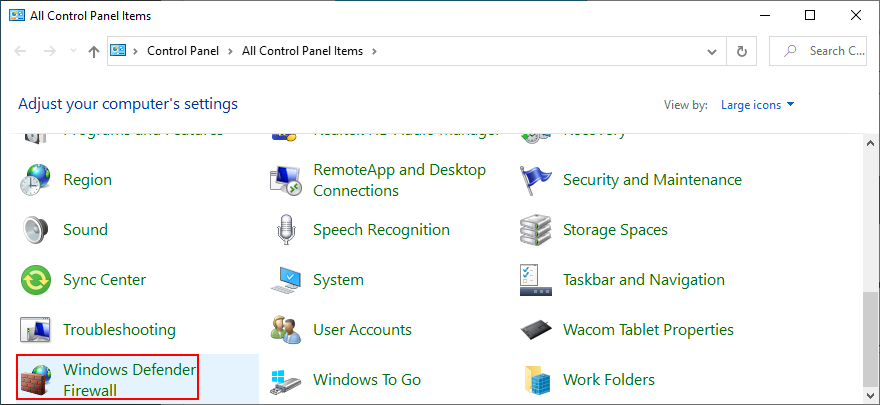

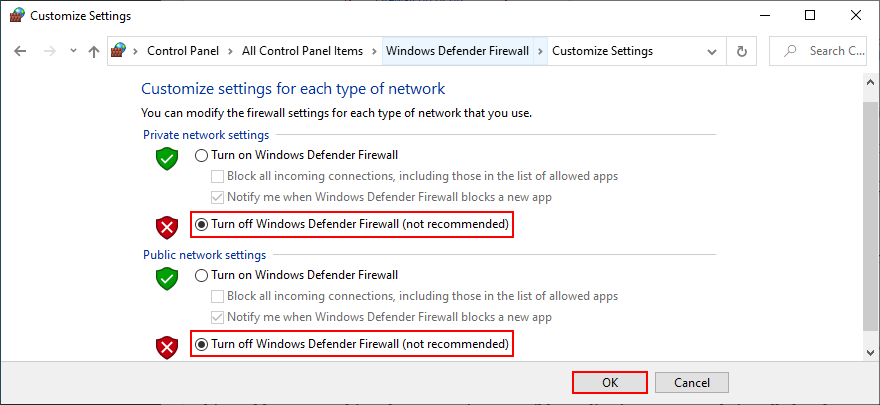
Even if this solution solved the computer crash, you shouldn’t leave the firewall turned off since it means leaving your system vulnerable to malware attacks. Instead, you should restore firewall settings to their factory values.
How to restore firewall settings to default:
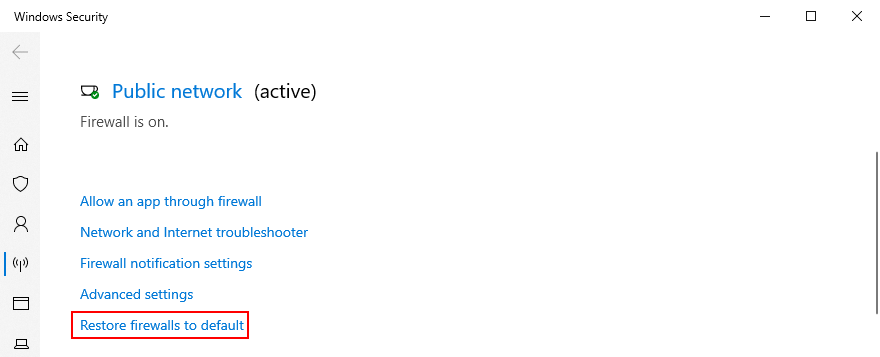
15. Check the storage space
If you don’t have enough storage space available on your computer, Windows won’t be able to start its processes and download the files it needs to work properly. In turn, this can lead to blue screen errors like PAGE FAULT IN NONPAGED AREA. But you can fix this issue by adding more storage space.
For instance, you can use a partition manager like Disk Management to increase the capacity of your Windows drive.
How to use Disk Management:
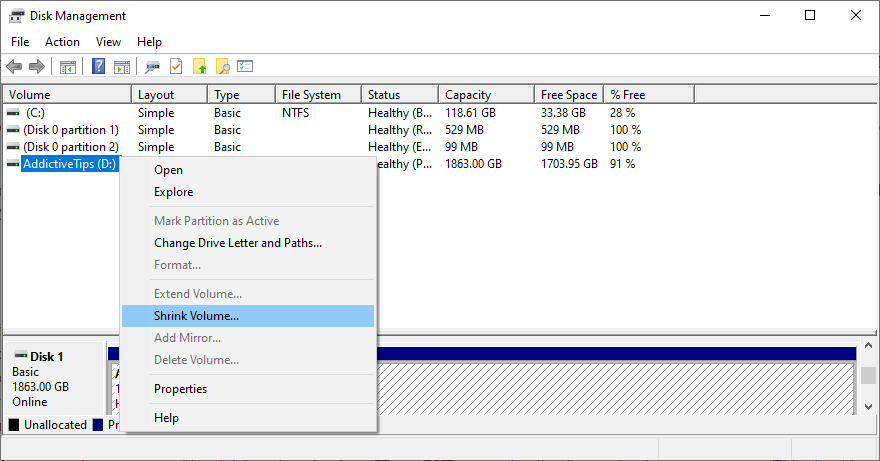
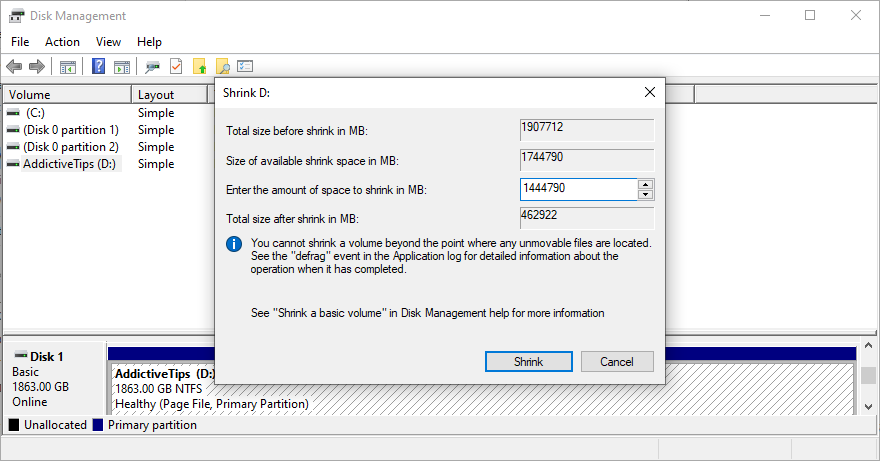
Another way to increase the storage space is by removing files. Make sure to uninstall large games and applications you don’t use anymore, as well as to move large photos, videos, documents, and other personal files somewhere else.
For example, you can back up your data to a removable storage unit, burn it to DVDs, or upload it to a cloud storage account. Remaining junk files on your computer can be eliminated with the help of a specialized cleaning solution such as CCleaner. Or, if you don’t want to install anything, use the Windows Disk Cleanup program.
How to use Disk Cleanup:
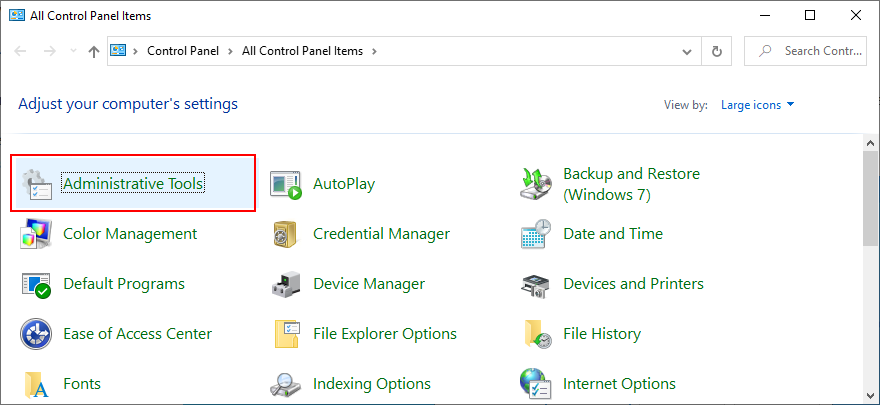
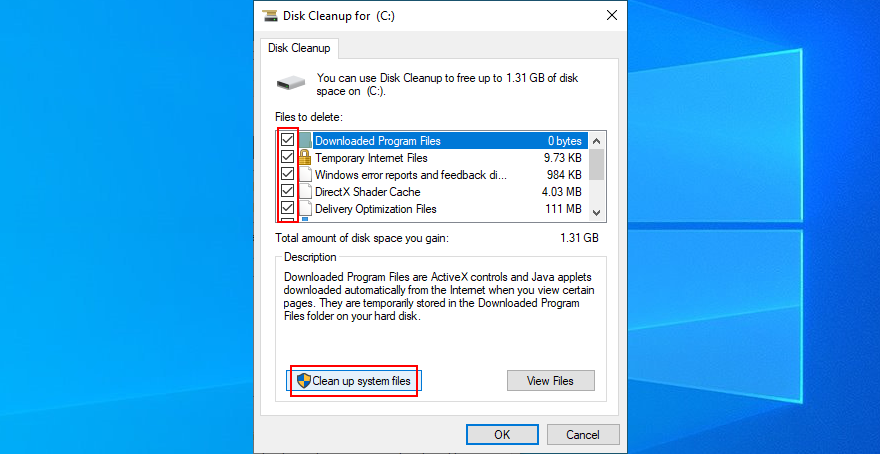
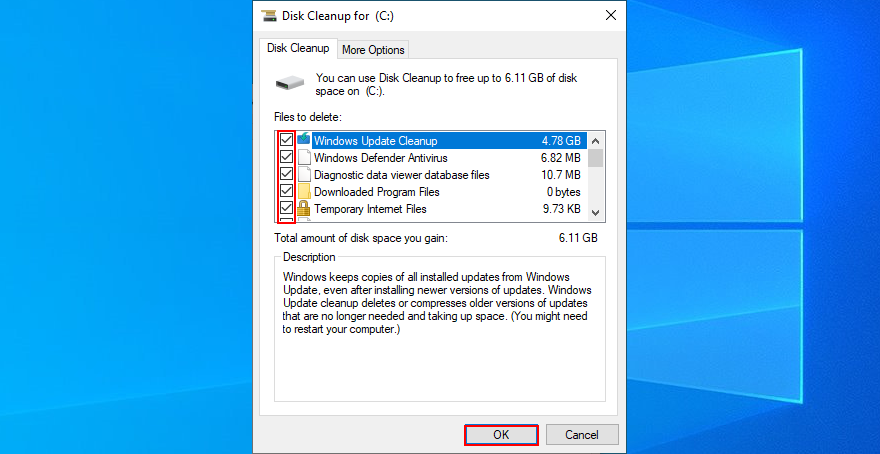
16. Run Hardware and Devices troubleshooter
As we mentioned in the beginning of this article, the PAGE FAULT IN NONPAGED AREA stop code can be caused by a malfunctioning device. An easy way to find and fix device problems is by using the dedicated troubleshooter that’s built into Windows 10.
Normally, you can track down this tool in Settings > Troubleshoot. But if Hardware and Devices troubleshooter is missing, you can run it with a simple command.
How to use Hardware and Devices troubleshooter:
msdt.exe -id DeviceDiagnostic and press Enter to launch the troubleshooter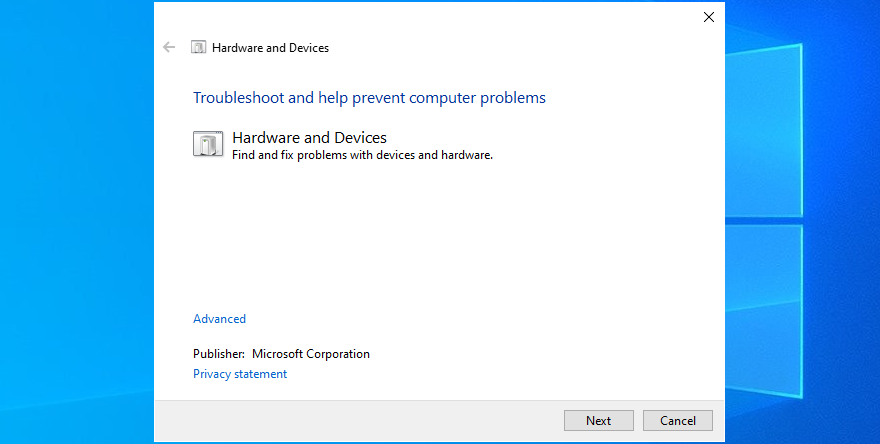
17. Disable hardware acceleration
Hardware acceleration is a technique used by certain applications to improve your graphics experience by demanding more power from your hardware. However, if your computer is not powerful enough to handle hardware acceleration properly or if it’s overworked, you shouldn’t be surprised when you get BSOD errors like PAGE FAULT IN NONPAGED AREA.
To fix this problem, make sure to disable hardware acceleration in all your applications, especially when it comes to gaming launchers or emulators. Here’s how to make it happen in your web browser.
How to turn off hardware acceleration in Google Chrome:
chrome://settings/ address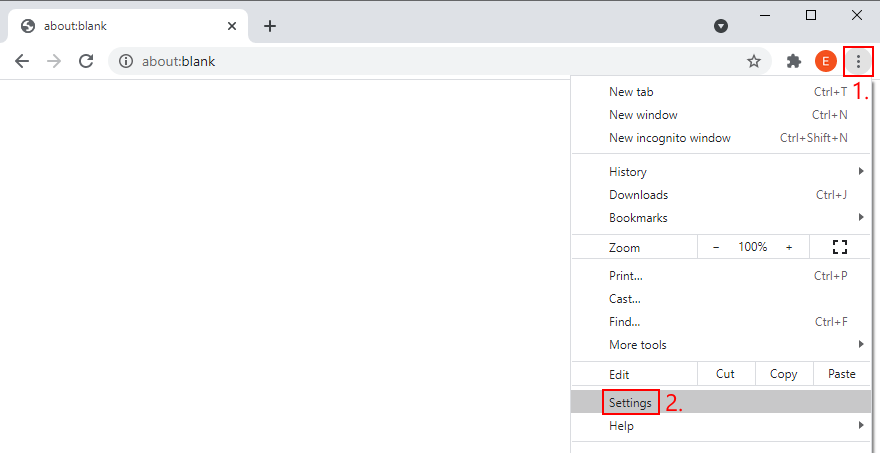

How to deactivate hardware acceleration in Mozilla Firefox:
about:preferences address instead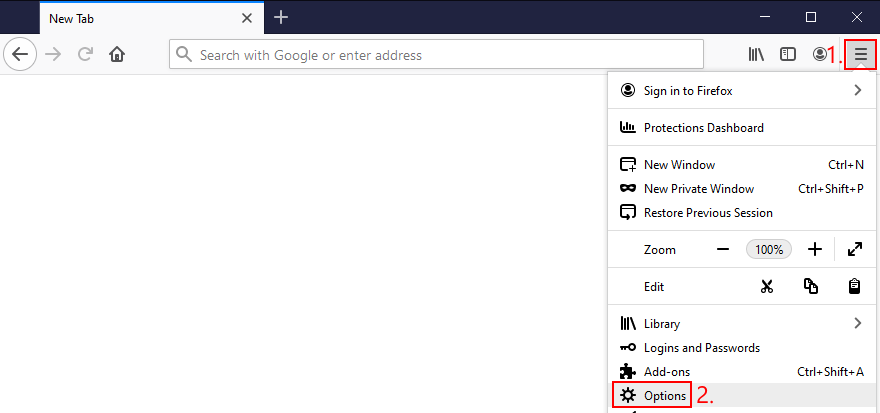
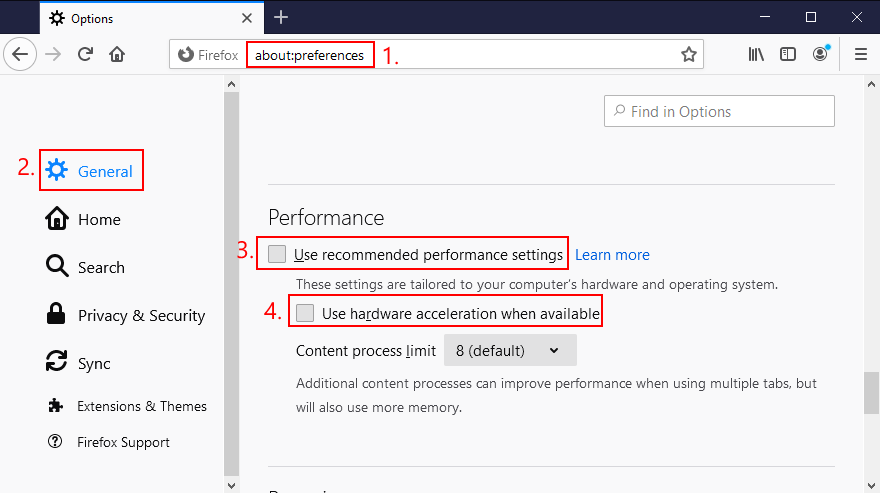
How to disable hardware acceleration in Microsoft Edge:
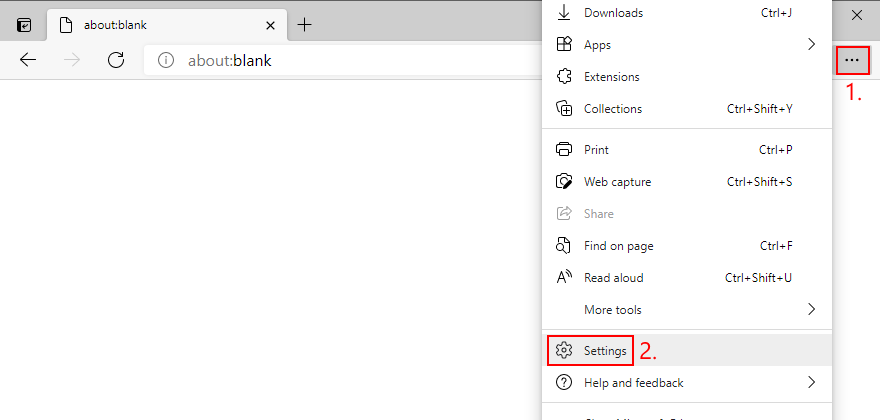
edge://settings/system address)
18. Roll back Windows
At this point, it might be a simpler idea to roll back Windows 10 to a restore point. However, this solution works only if System Restore is enabled on your computer and if you, your system or your applications have created a restore point before your PC started experiencing stability issues.
Before proceeding with System Restore, though, keep in mind that you will lose all applications installed beyond the restore point, so you will have to reinstall them afterward.
How to use System Restore:
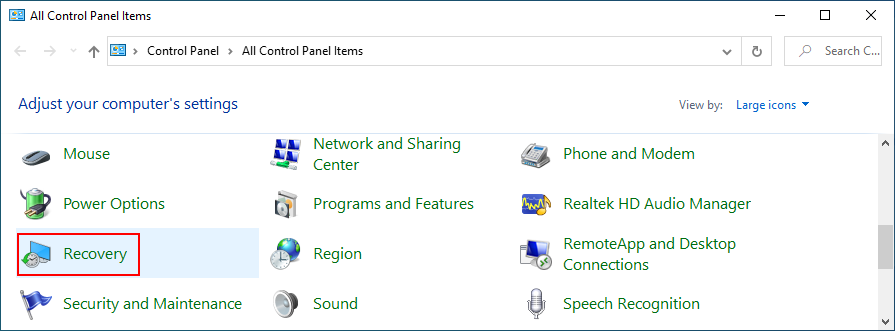
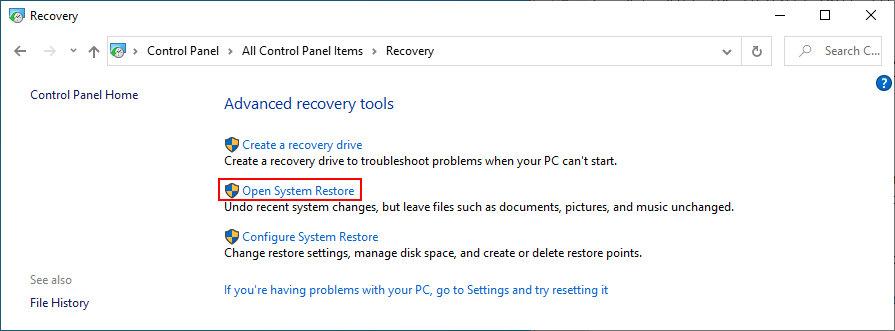

19. Find out more about the BSOD error
If you prefer getting in touch with tech support and asking for help in troubleshooting PAGE FAULT IN NONPAGED AREA, it’s a good idea to gather and share as many details as possible about the error. A handy tool for this job is Event Viewer, an internal Windows 10 tool.
How to use Event Viewer:
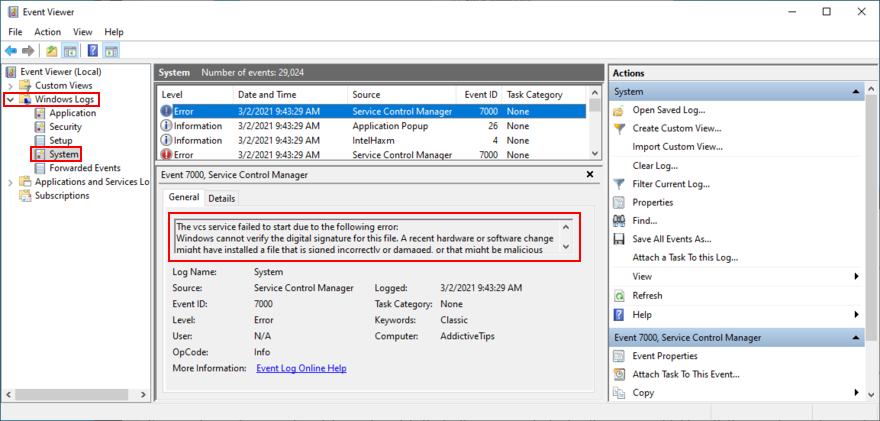
Casual users looking for a simpler way to access the event details created by this BSOD error can use BlueScreenView. It’s a third-party tool that you don’t need to install: just download and run. It’s lightweight, easy to use, and offers an intuitive interface for analyzing minidump (.dmp) files created by blue screen events.
20. Remove newly installed software
Some software applications don’t fully support Windows 10 or have settings that clash with the system configuration. So it’s a good idea to uninstall these incompatible programs and restore the stability of your PC.
For example, many users have reported that uninstalling uTorrent or Tencent Gaming Buddy fixed the PAGE FAULT IN NONPAGED AREA error. Pay special attention to any new and suspicious apps you installed, like free driver updaters, VPN services, proxy servers, torrenting clients, or gaming emulators.
How to uninstall recent software:
If you prefer a better solution, we recommend checking out dedicated application removers. These are tools specialized in thoroughly uninstalling programs by getting rid of any leftover files and registry entries.
21. Unplug external devices
If you have recently attached an old or new device to your computer unit, like a USB flash drive, an external hard disk, a wireless adapter or a webcam, perhaps it’s causing stability issues with your computer.
Just unplug the device and see what happens when you boot Windows again. If you’re unsure, detach everything, aside from your mouse and keyboard. Then, start your operating system to confirm that you’re not getting blue screen errors anymore.
It’s also a good idea to change USB ports since any one of them could be malfunctioning. Moreover, you should check the cables and replace any damaged ones.
22. Fix the system registry
The Windows registry contains essential information about your operating system and how its software components interact with each other. If it has corrupt, missing or modified data, it’s no wonder that you keep seeing stop code PAGE FAULT IN NONPAGED AREA.
This usually happens after installing and uninstalling software programs from unknown sources, which are too invasive when it comes to the system registry. You can try using a registry cleaner to solve this issue but, if you don’t want to install third-party apps, here’s what you need to do.
How to repair the registry:
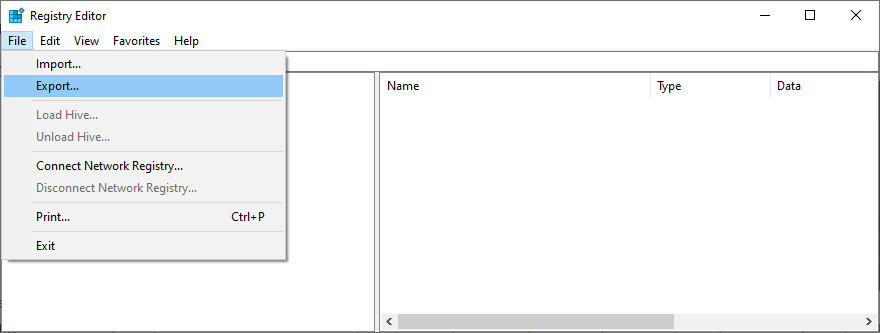
cd c:\Windows\System32\config
ren c:\Windows\System32\config\DEFAULT DEFAULT.old
ren c:\Windows\System32\config\SAM SAM.old
ren c:\Windows\System32\config\SECURITY SECURITY.old
ren c:\Windows\System32\config\SOFTWARE SOFTWARE.old
ren c:\Windows\System32\config\SYSTEM SYSTEM.old
copy c:\Windows\System32\config\RegBack\DEFAULT c:\Windows\System32\config\
copy c:\Windows\System32\config\RegBack\DEFAULT c:\Windows\System32\config\
copy c:\Windows\System32\config\RegBack\SAM c:\Windows\System32\config\
copy c:\Windows\System32\config\RegBack\SECURITY c:\Windows\System32\config\
copy c:\Windows\System32\config\RegBack\SYSTEM c:\Windows\System32\config\
copy c:\Windows\System32\config\RegBack\SOFTWARE c:\Windows\System32\config\
23. Check the Windows page file
The Windows page file (also known as the swap file) is in charge of your system’s virtual memory size. It’s useful when your OS moves data from RAM to the virtual memory size when the memory is full, in order to prevent data loss and corruption.
Normally, the swap file doesn’t pose a problem for modern computers with plenty of RAM. However, even if you have enough memory, the page file shouldn’t be left disabled or to a low value.
Otherwise, your computer might crash when it gets too busy trying to run multiple applications at the same time. As a result, it shows a blue screen and the PAGE FAULT IN NONPAGED AREA stop code due to incorrect page file settings.
In this case, you should change the virtual memory size on Windows 10:
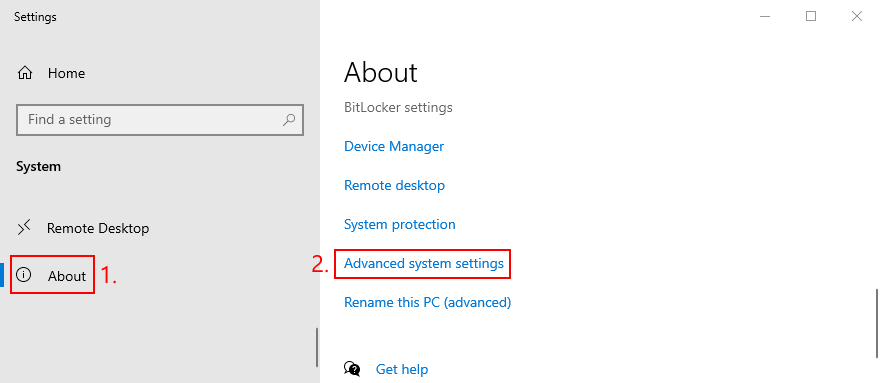
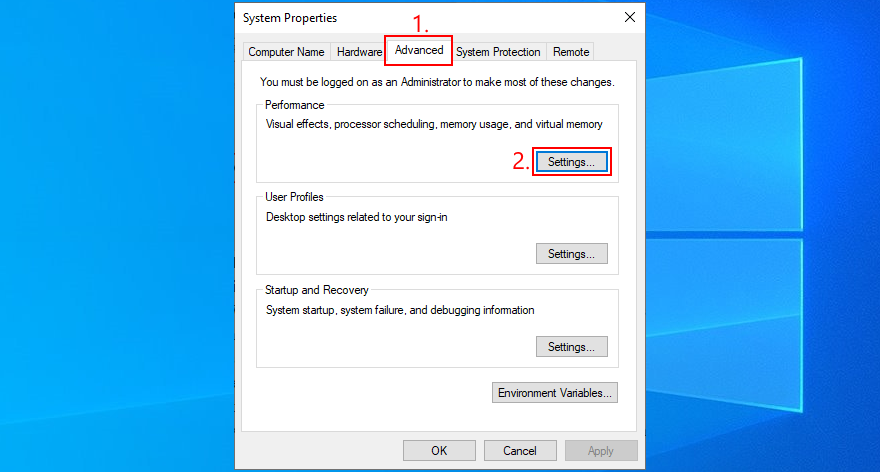
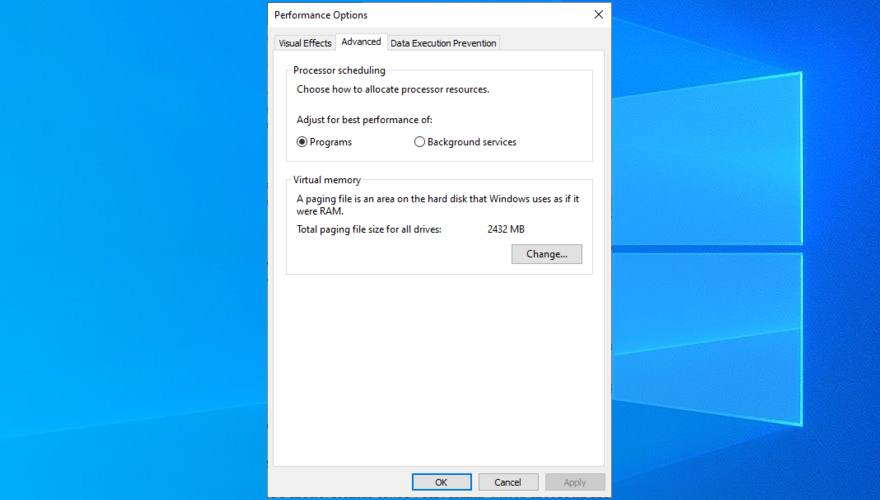
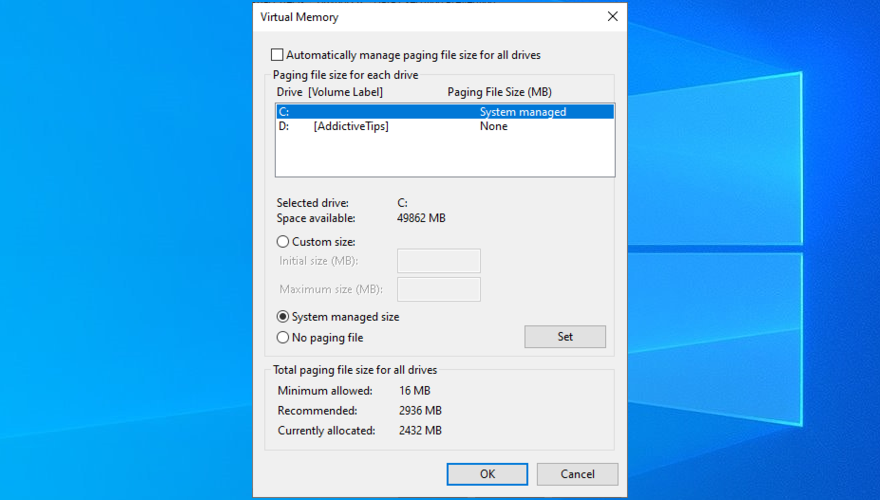
24. Disable Fast Startup
Windows 10 has a special feature called Fast Startup, which speeds up the boot process by not terminating all processes and services at shutdown. Although it has its obvious benefits, Fast Startup is sometimes guilty for blue screen errors like FAULT IN NONPAGED AREA.
But you can disable Fast Startup on Windows 10:
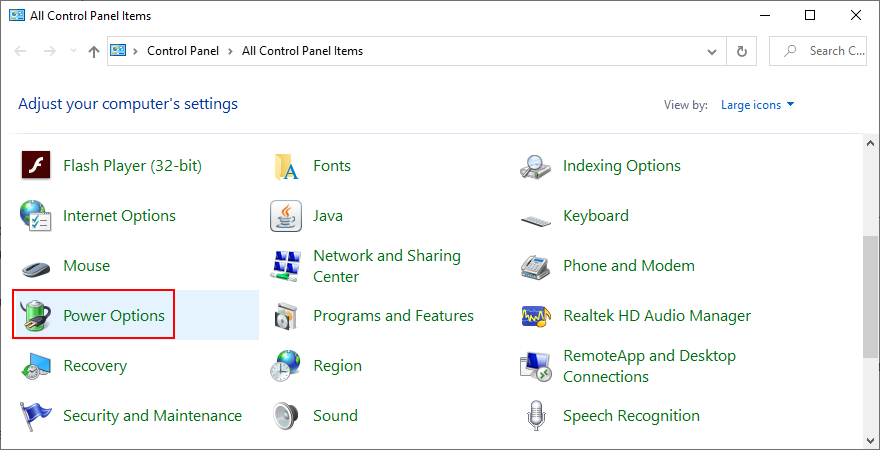
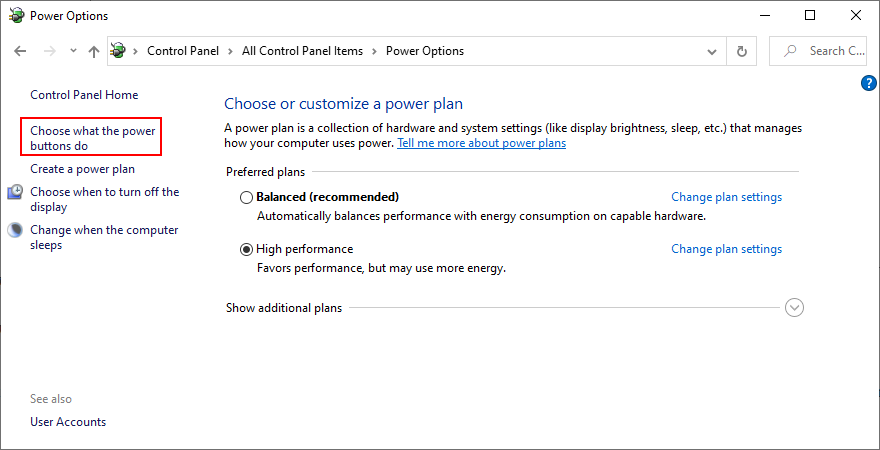

25. Change your monitor refresh rate
You might be underclocking or overclocking your monitor without even realizing it. As unconformable as it may be for the eyesight, incorrect refresh rate settings could send your computer into a spiral due to fatal graphics errors.
To fix it, just modify the monitor’s refresh rate on Windows 10:

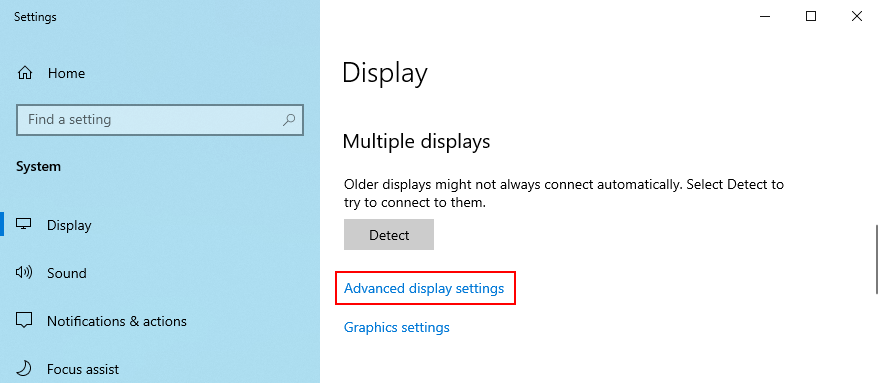
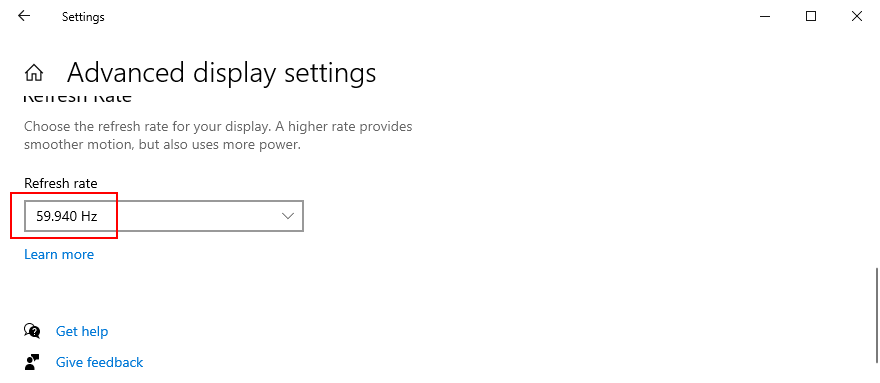
26. Disable overclocking
Gamers prefer overclocking software solutions to amp up their computer settings and enhance their gaming experience, particularly when the PC doesn’t meet the game’s minimum system requirements. But it’s not usually a good idea for your PC’s health.
If you’re using a dedicated tool for overclocking your RAM and speeding up your PC, disable that setting since it could be the reason why your computer freezes and shows the PAGE FAULT IN NONPAGED AREA (it’s directly tied to the RAM).
You might have to take one step further and uninstall the overclocking tool from your PC. However, if the overclocking setting was configured in BIOS, skip this step and check out the next solution.
27. Reset BIOS
If you configured BIOS settings, such as overclocking or caching, maybe you made a wrong move that triggered system crashes. It’s not necessary to identify and repair the exact BIOS settings since you can reset the entire BIOS configuration to default. Here’s how:
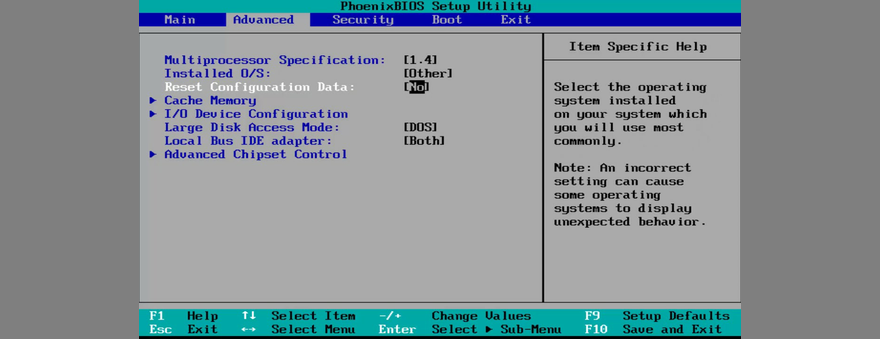
28. Update BIOS
If the PAGE FAULT IN NONPAGED AREA stop code wasn’t resolved in the previous solution, you should update BIOS to the latest version if you have never done this. In addition to improving the BIOS, you might also get access to new options.
How to update BIOS:
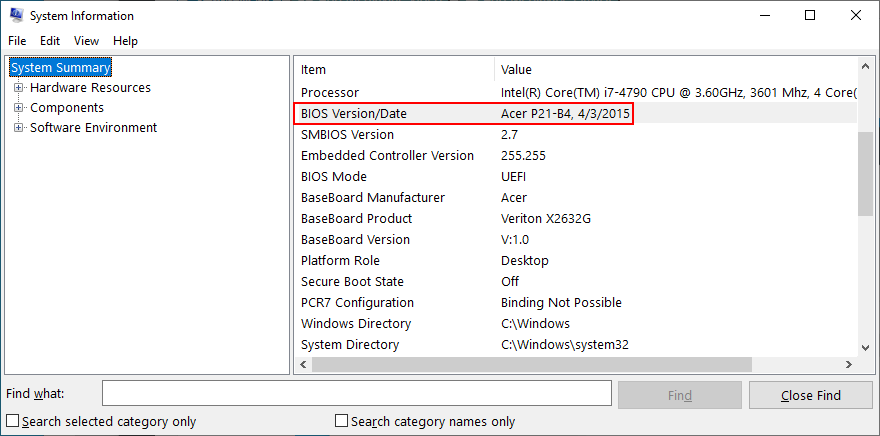
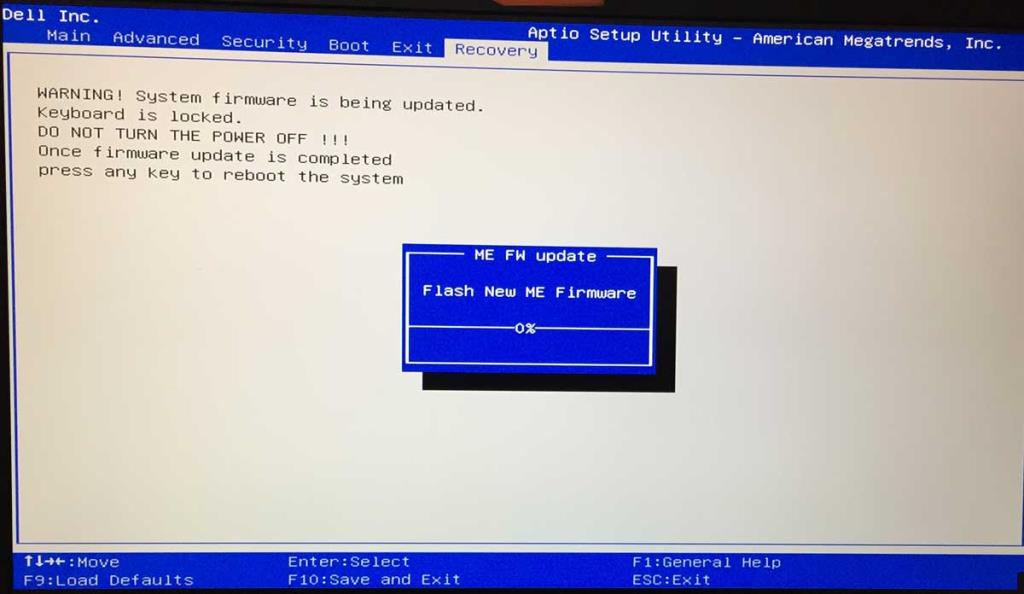
29. Reset Windows 10
The last resort is resetting Windows 10 to factory mode. You don’t have to back up your personal files since they will be left untouched. But your entire set of games and applications installed on the Windows drive will be gone, so you will have to reinstall everything from scratch.
How to reset Windows 10:
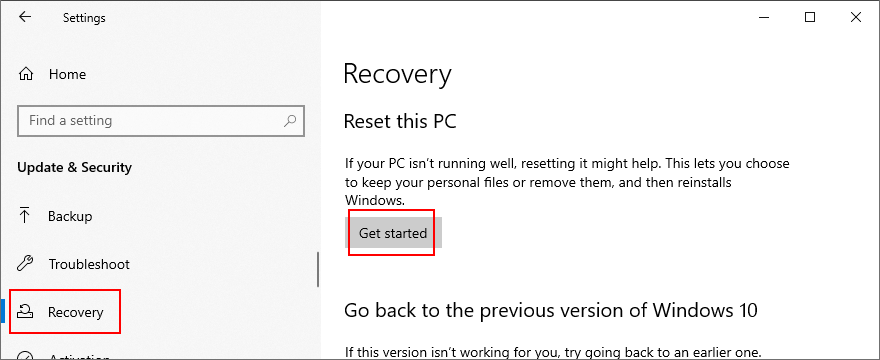
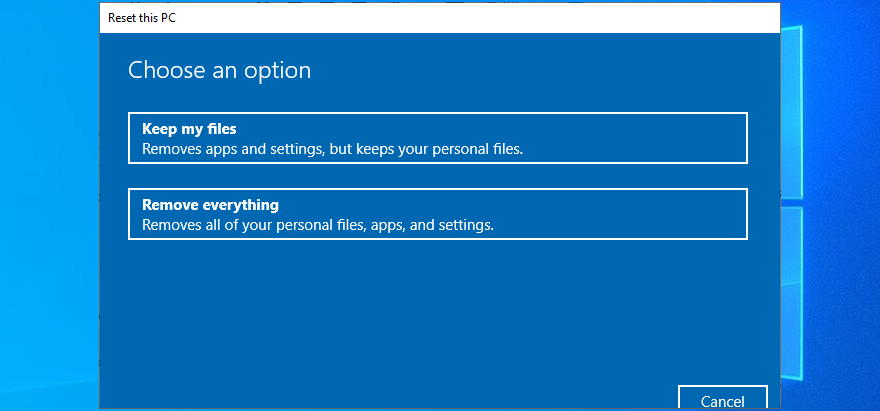
CONCLUSION: Stop code PAGE FAULT IN NONPAGED AREA can be fixed
To review, PAGE FAULT IN NONPAGED AREA is a blue screen error that tells you about a critical system file which can’t be found by Windows in the system memory. Your computer shuts down in an effort to prevent major data loss.
There are multiple approaches toward fixing this issue, but you should start with something as simple as hard-rebooting your PC and running Windows Update. Next, you can repair hard disk errors and corrupt system files, check your device drivers, run a malware scan, and clean boot Windows 10 or start it in Safe Mode.
It’s also a good idea to reinstall your drivers using Display Driver Uninstaller. Plus, you can repair and reinstall .NET Framework, check your memory using Windows Memory Diagnostic, remove and reseat the memory slots, temporarily disable your antivirus and firewall, check the storage space, and run Hardware and Devices troubleshooter.
또한 하드웨어 가속 비활성화, Windows 롤백, 이벤트 뷰어 사용, 최신 소프트웨어 제거, 외부 장치 분리, 시스템 레지스트리 수정, Windows 페이지 파일 확인, 빠른 시작 비활성화, 모니터 재생 빈도 변경, 오버클러킹 끄기, 재설정 BIOS를 업데이트하거나 Windows 10을 재설정하십시오.
컴퓨터에서 페이지 오류 IN 비페이지 영역 정지 코드를 어떻게 제거했습니까? 아래 의견에 알려주십시오.
Photoshop에서 사용자 정의 캔버스 사전 설정을 만들고 저장하는 방법
휴대폰에서 데스크톱 프린터로 인쇄하는 방법
Dwm.exe란 무엇인가요? Dwm은 Desktop Window Manager의 약자로, Windows 바탕 화면에 투명 창, 라이브 창 등 그래픽 효과를 추가하는 데 사용됩니다.
CCleaner가 시스템 정리의 대명사라는 사실은 이제 누구나 알고 있습니다. 마치 Google이 검색의 대명사인 것처럼 말이죠. CCleaner는 가장 오래된 시스템 클리너 중 하나입니다.
WebTech360Tips에서는 Comodo System Cleanser, Perfect Utilities 등 다양한 무료 시스템 클리너를 소개해 드렸습니다. 고급
OpenBroadcasterStudio에서 출력 시작 실패 오류를 수정하고 손쉽게 화면 녹화로 돌아가는 방법을 알아보세요.
Tcp Soft Router로 네트워크 관리를 강화하세요. 복잡한 라우터 구성 없이도 TCP 라우팅 작업을 쉽게 수행할 수 있습니다.
Last.fm은 인기 있는 음악 인터넷 라디오 사이트인데, 그곳에서 앨범 아트를 무료로 다운로드하는 것보다 더 좋은 방법이 있을까요? 바로 Cover가 제공하는 기능입니다.
컴퓨터 세계에서는 항상 최악의 상황에 대비해야 합니다. 거의 모든 버전의 Microsoft Windows는 데이터 백업 유틸리티를 제공하지만, 그 기능은 제한적입니다.
사용자가 Windows 7 로그온 화면을 변경할 수 있는 애플리케이션이 많이 있습니다. 거의 대부분의 애플리케이션은 애플리케이션을 시작해야 하며,
